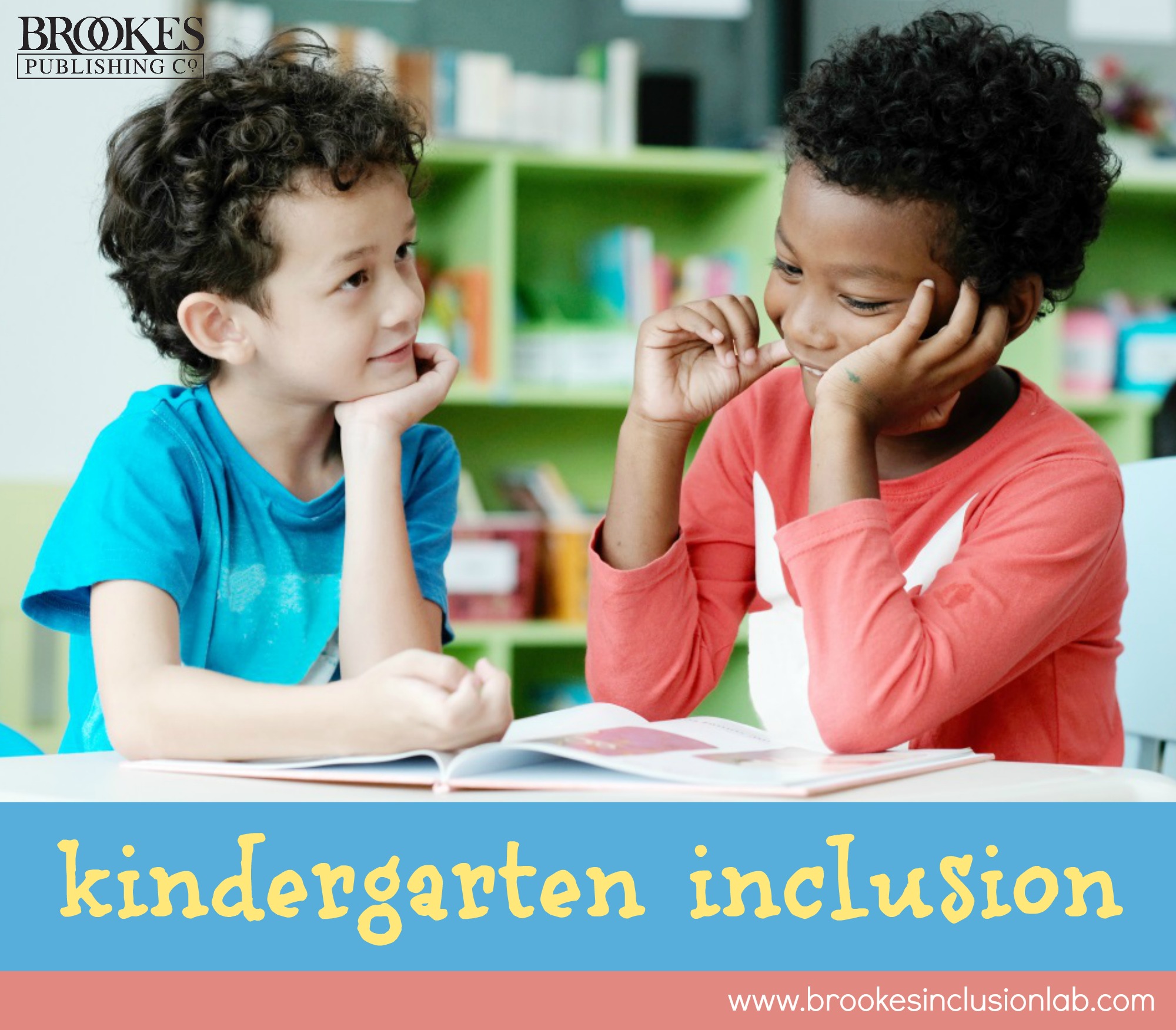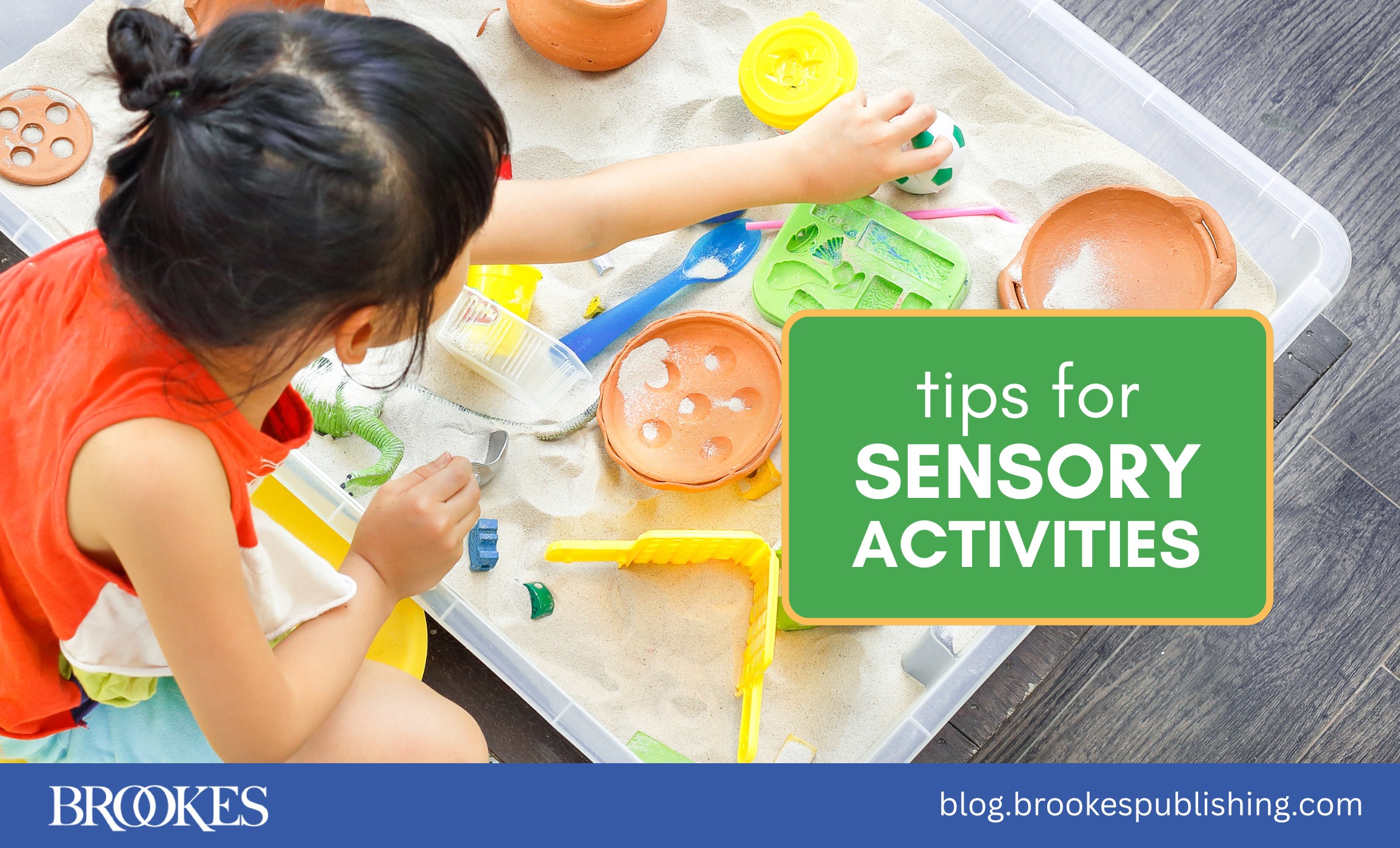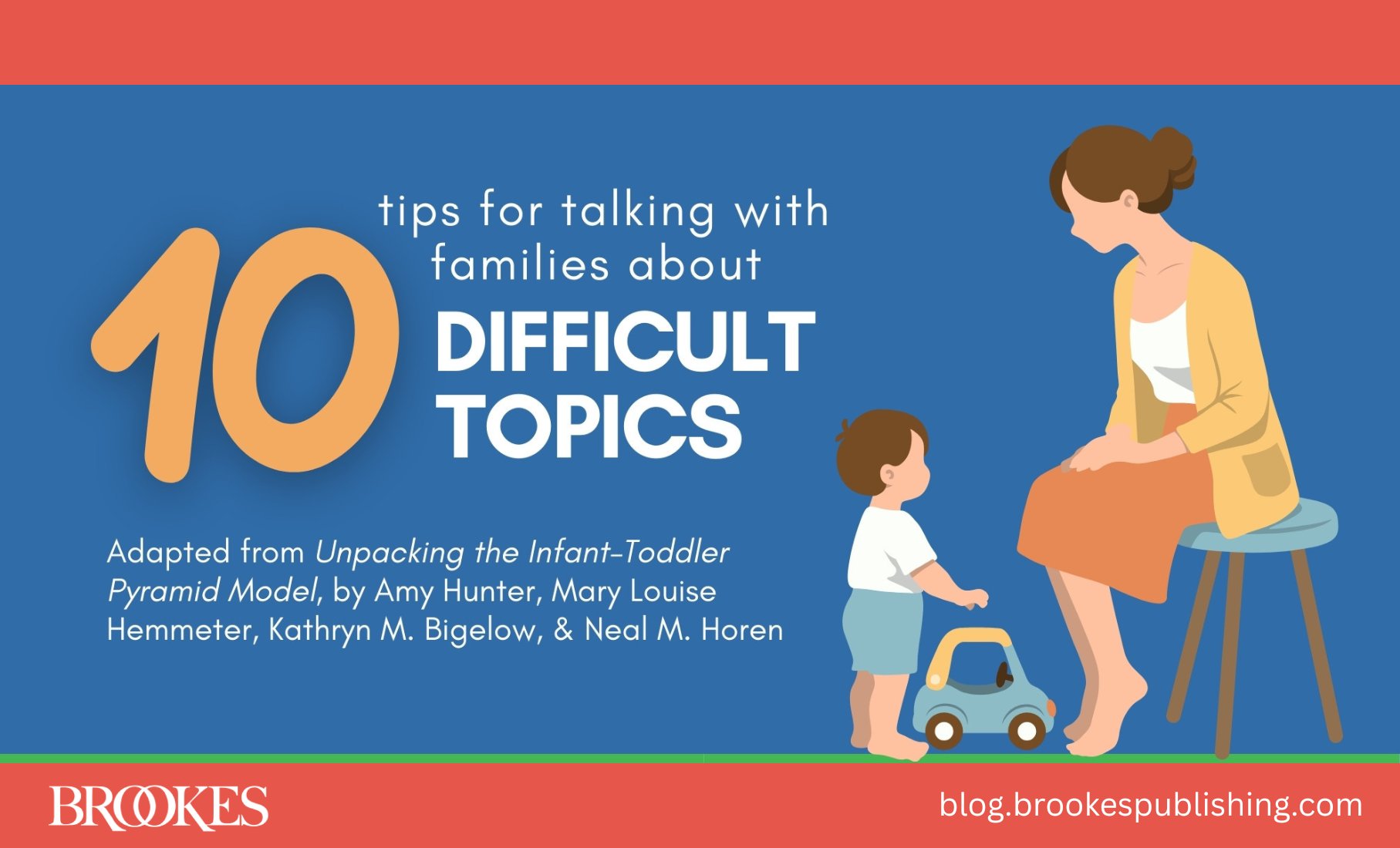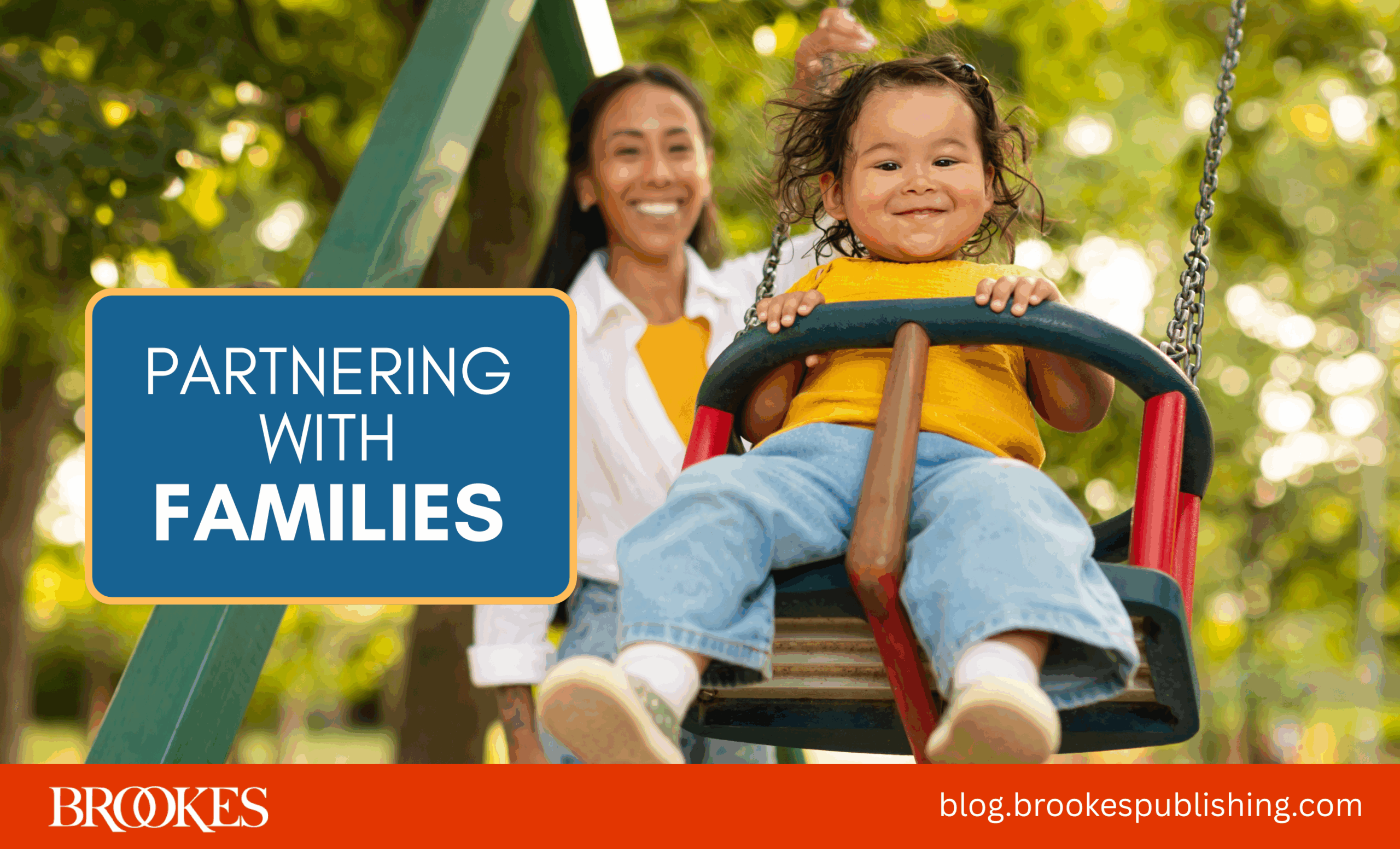22 Ways to Support Children with Disabilities in Inclusive Kindergarten Classrooms
May 29, 2018
The transition from preschool to kindergarten can be a challenging one for any young child. There’s a new classroom to get used to, a new teacher with new rules, and many more academic and social expectations to navigate. When a child has a disability or special support needs, it adds another layer of complexity to the kindergarten transition–but with some careful planning, teachers and parents can ensure that the child is fully welcomed and supported in their new classroom.
Today’s blog post–our last one before our summer hiatus–gives you nearly two dozen ideas for supporting children with disabilities in an inclusive kindergarten classroom. Excerpted and adapted from Making Preschool Inclusion Work by Anne Marie Richardson-Gibbs & M. Diane Klein, these tips and strategies are a good starting point for welcoming and including every young learner (though you’ll definitely want to tailor your approach to fit the needs of each individual child). Try the ones you think will work, and add your own ideas in the comments below!
Before the transition, try these strategies to help a child prepare for a great year of kindergarten:
- Before a child with a disability transitions to your kindergarten classroom, see if you can observe the child in their existing preschool program. Seeing the child in a comfortable setting will help you get a better picture of their strengths and needs and what you can do to support their success in your classroom.
- Invite the new kindergartener to visit your class the week before school starts so they can get acquainted with you and their new surroundings.
- Create a “transition story” about leaving preschool and going to kindergarten, with accompanying photos or drawings. Encourage parents to read the transition story with their child.
- If an itinerant inclusion specialist is part of your school team, work with that person to determine the most effective types of adult support for specific children.
Once school starts, here are some supports you might consider using for children with varying needs:
- Provide cube chairs with low seats during carpet or large group periods when peers are sitting on the floor, to meet the needs of a child who has difficulty sitting with the group during circle time.
- Offer calming weights for children to hug or place on their heads, shoulders, or laps.
- Keep favorite small toys, manipulatives, or stuffed animals in a box and offer them to a sensory-seeking child to hold in their hand during your group period.
- Use air cushions or a carpet square with the child’s name on it to help define their sitting space.
- Create visual schedules that show what comes next to help calm children who thrive on routine and need to know what’s coming next
- Offer chances to take a break if your large group period is too long for some children. As the child becomes more used to the classroom schedule, you might slowly begin to increase the number of minutes in the large group by acknowledging the child’s request and signaling “one more minute” before allowing a break.
- Ask the paraprofessional or aide to use an individual set of worksheets with the child to help the child focus as the teacher explains worksheets to the whole class. They can point to areas of the worksheet that the teacher is discussing and help the child do the same.
- During small group periods, seat the child next to an adult monitoring that group for extra support.
- Check that the child’s seat and table are a good fit. Can the child sit comfortably, with good posture in the chair, and engage in fine motor work like cutting with scissors? If necessary, provide a taller chair, stool, or footrest and use a cushion for the child’s back if the seat or chair is too deep.
- Use visual timers to show the number of minutes left in an activity.
- Allow the child to work in different areas of the classroom if sitting at a table for an entire activity is too difficult. Some children may work better lying on the floor or working alone for part of small group time.
- Offer pencil grips, adapted scissors, or slant boards for paperwork if children have fine motor challenges.
- Be sensitive to children with sensory issues–such as an aversion to touching glue or paint–and provide tools to help the child so they don’t need to use fingers.
- Cover up sections of worksheets with blank paper or fold worksheets. This can reduce visual overload and help the child focus on one task at a time.
- Notice and use children’s natural motivators. Sometimes children are motivated by simple things such as a stamp or happy face at the bottom of a work page; sometimes the opportunity for free play at the end of a task is an effective motivator.
- If modifications are made to a child’s required schoolwork, provide folders with the modified assignments ready for them.
- Consider modified homework after the first trimester if the child is not progressing in academic areas. For example, send home name-printing practice rather than sentence or word practice, or send two pages of work rather than four.
- Check in with parents about whether it’s a struggle for the child and family to complete all homework. Make adjustments as needed.
As your next school year gets underway, be sure to talk to other adults in the classroom–paraprofessionals, aides, parent volunteers–so that everyone understands and consistently uses agreed-on accommodations for children who need them. And reinforce the home-school connection by keeping lines of communication open all year. Ask parents how their child is doing, give them updates on their child’s progress, ask them to share strategies that work at home, and tell them what’s been especially effective for their child in the classroom. Working as a team with parents, paraprofessionals, inclusion specialists, and other members of the school team, you’ll help give every child an A+ kindergarten year.
***
CHECK OUT THE BOOK
Making Preschool Inclusion Work gives you a thorough introduction to inclusion supports: evidence-based practices and strategies that help children with disabilities fully participate in early childhood classrooms.

The Brookes Inclusion Lab will be on a brief summer hiatus for the month of June and part of July. We’ll be using that time to create some great new content that’ll help you gear up for the new school year. In the meantime, if there’s anything you’d love to see us cover in the fall, please drop us a line and let us know! (You can contact Jen, the Inclusion Lab editor, at jlillis AT brookespublishing DOT com.)
Congrats on a successful school year, and enjoy your summer. We’ll see you soon!




Write a Comment
Your email address will not be published. Required fields are marked *
Post a Comment